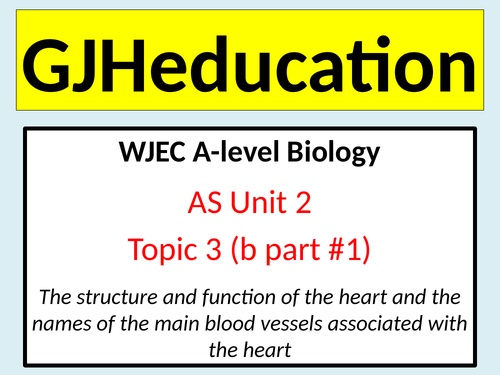



This lesson describes the structure and function of the human heart and names the blood vessels associated with this organ . The PowerPoint and accompanying resources are part of the first lesson in a series of 2 lessons that have been designed to cover point (b) in topic 3 of AS unit 2 of the WJEC A-level Biology specification
As this topic was covered at GCSE, the lesson has been planned to build on this prior knowledge whilst adding the key details which will enable students to provide A-level standard answers. The primary focus is the identification of the different structures of the heart but it also challenges their ability to recognise the important relationship to function. For example, time is taken to ensure that students can explain why the atrial walls are thinner than the ventricular walls and why the right ventricle has a thinner wall than the left ventricle. Opportunities are taken throughout the lesson to link this topic to the others found in topic 3 including those which have already been covered like circulatory systems as well as those which are upcoming such as the initiation of heart action. There is also an application question where students have to explain why a hole in the ventricular septum would need to be repaired if it doesn’t naturally close over time.
Get this resource as part of a bundle and save up to 33%
A bundle is a package of resources grouped together to teach a particular topic, or a series of lessons, in one place.
Something went wrong, please try again later.
This resource hasn't been reviewed yet
To ensure quality for our reviews, only customers who have purchased this resource can review it
Report this resourceto let us know if it violates our terms and conditions.
Our customer service team will review your report and will be in touch.